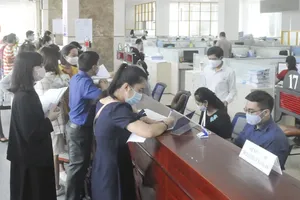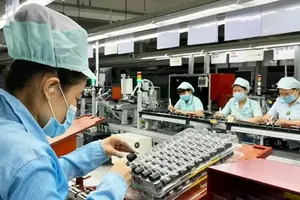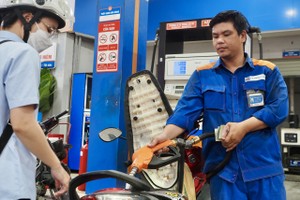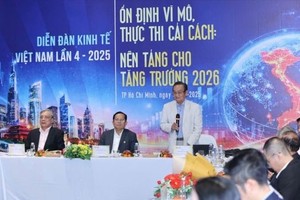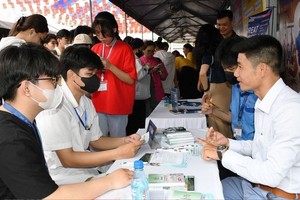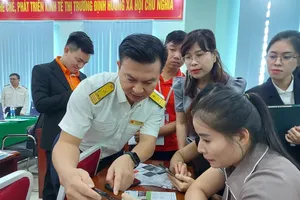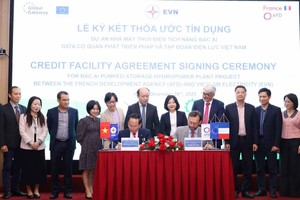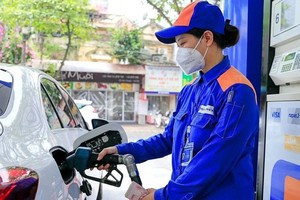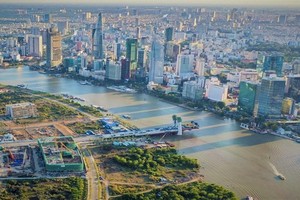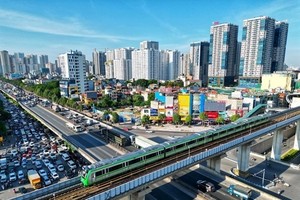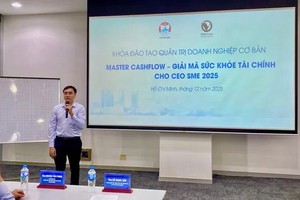 |
Illustrative image. (Photo: SGGP) |
At the scientific seminar "Attracting Foreign Direct Investment Capital to Ho Chi Minh City in the 2023-2025 Period, with a Vision to 2030" held by the HCMC Institute for Development Studies on May 12, many scientists, experts, and businesses expressed their concerns about what advantages HCMC possesses to attract FDI.
Slowdown in FDI attraction
The seminar's topic on FDI attraction garnered significant attention from the attendees, particularly in light of the impending global minimum corporate tax implementation. Given this, tax incentives are no longer the advantage they once were for HCMC in attracting foreign investment.
Ms. Mai Phong Lan, Deputy Head of the Department of Enterprises, Collective, and Private Economy under the Department of Planning and Investment, presented the project to attract FDI capital for HCMC from 2023-2025, with a vision to 2030. She stated that in 2022, the total value of FDI capital in HCMC exceeded US$4.33 billion, equivalent to 60.29 percent of the same period in 2021. These 927 new projects concentrated in several industries, such as wholesale and retail, automobile and motorcycle repair, and information communication and technology.
Ms. Mai Phong Lan points out several challenges facing HCMC's efforts to attract FDI, including the concentration of capital inflows in specific districts and industries, limited spillover effects in terms of technology, expertise, and supply chains for domestic businesses by FDI enterprises, environmental concerns related to many FDI projects, a lack of guaranteed workforce quality, and labor shortages in dynamic areas. As a result of the labor shortage, job turnover rates are high in FDI enterprises.
According to Ms. Cao Thi Phi Van, Deputy Director of the HCMC Investment and Trade Promotion Center (ITPC), the main hurdle to attracting FDI, aside from tax incentives, is the investment environment. Based on their surveys, ITPC has identified that the most significant factors affecting the investment environment are political stability, a transparent and clear investment environment, consistent and predictable policies, a high-quality workforce, and reliable transportation and telecommunications infrastructure.
Old investors are not neglected
Mr. Pham Phu Truong, Chairman of the HCMC Young Businesspeople Association, has proposed the need for a concrete definition of strategic investors that the city aims to attract. According to him, such investors should be capable of opening up new development prospects for the city, attracting other investors in the process. Echoing this sentiment, Assoc. Prof. - Dr. Nguyen Ngoc Vinh, Director of the Institute of Economic Development Research under the HCMC University of Economics, emphasized the importance of establishing specific investment attraction criteria. Specific and clear criteria with an implementation roadmap will help businesses identify and prepare so they can strive and prepare accordingly.
"With clearly defined criteria, businesses will find it easier to make decisions on whether to invest or expand their investment. This will also serve as the foundation for evaluating the level of investment attraction achieved annually or in a given period," noted Assoc. Prof. - Dr. Nguyen Ngoc Vinh.
Some delegates have expressed concerns about the lack of comprehensive information regarding investments in HCMC. They have noted that guidance on policies in some other localities is more thorough and attentive compared to that in HCMC. Some of them have also raised concerns about whether the city's new policies may sideline existing businesses. Moreover, the delegates believe that HCMC needs to enhance regional connectivity in FDI attraction.
Dr. Truong Minh Huy Vu, Vice Director of the Institute for Research and Development of HCMC, emphasized that the city's leadership prioritizes directing FDI policy toward investors who have already established a presence in the city. He also highlighted the importance of planning as a crucial tool for regional connectivity and noted that the planning being developed demonstrates a clear commitment to promoting regional connectivity. In addition to planning, HCMC has been actively promoting many inter-regional transportation projects, including the Ring Road No.3 project, the HCMC - Moc Bai Expressway, and the HCMC - Thu Dau Mot - Chon Thanh Expressway. Industrial development is expected to follow the transportation axis.
HCMC’s FDI attraction targets
HCMC aims to attract more foreign direct investment by boosting the registered investment capital from countries and territories like South Korea, Japan, Singapore, China, Taiwan, Malaysia, Thailand, India, Indonesia, the Philippines, France, Germany, Italy, Spain, Russia, the United Kingdom, and the United States to above 70 percent between 2023 and 2025 and 75 percent between 2026 and 2030.
The goal for HCMC is to increase by 50 percent the number of multinational corporations from the Fortune 500 largest companies in the world that have a presence and operate in the city by 2030.
By 2025, the city aims to attract over 50 high-tech projects with a total investment capital of more than $3 billion.
